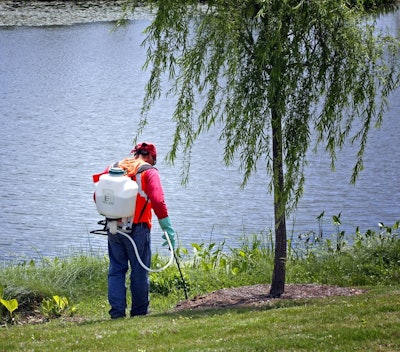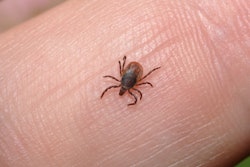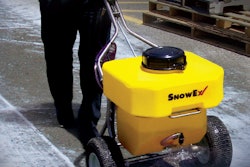
To help, Giroud Tree and Lawn provided a few spring maintenance tips, including proper mowing and watering techniques.
First, landscapers needs to determine any problems with the landscaping, including:
1. Poor soil: Improperly balanced soil pH, low organic matter levels, compaction and drainage can adversely affect even the most well cared for lawn.
2. Insects and disease: Non-beneficial fungi and insects are always present but not necessarily in sufficient numbers to cause damage. Properly timed controls, resistant grass varieties, and healthy turf and soil are the best defense against these pests.
3. Nutrient deficiencies: Lawns require regular fertilizer treatments to replace nutrients utilized by the plant or not readily available from the soil. Get lab test of the soil for a comprehensive analysis of soil health and nutrient content
4. Improper mowing and watering: Lawns mowed too short can lead to scorching and lawn thinning, inviting weed and crabgrass infestations. Too much or too little watering impacts both plant and soil health.
Build a Healthy Lawn:
1. Lawn Inspection: The inspection should include testing soil conditions, evaluating lawn problem areas and determining the best course of action. The best lawn treatments are customized to fit the exact needs of each specific lawn. Additionally, the program needs to be aligned with a client’s preference for chemical versus 100 percent organic lawn treatments.
2. Fertilize at the proper time: Since every lawn is different, treatment must be customized to fit each lawn’s specific needs and growing conditions. For spring, apply a lawn fertilizer treatment containing both quick and slow release nitrogen. Use a starter fertilizer formula if the lawn has been seeded.
3. Control weeds and crabgrass: Having a thick, healthy lawn is the best control since weeds tend to thrive in thin or bare areas. Control crabgrass and weeds with a selective herbicide that will not harm turf grass. Catch crabgrass early by applying a preemergent crabgrass control to inhibit weedy grass germination. For weed controls, liquid products will provide better coverage to small weeds than granular materials. Apply while weather is cool and wind is still. Always follow label directions when using lawn products.
4. Insect and disease problems: Outbreaks should only be treated if the problem actually exists. If confirmed, proper timing of treatments is critical.
5. Planting for sun vs. shade: Don’t fight Mother Nature, work with it. Thin and raise tree canopies to allow more light on lawn areas affected by excessive shade.
- Full sun areas: Use Kentucky bluegrass, perennial ryegrass or tall fescue
- Shadier spots: Plant fine or red fescue.
- Heavy shade: Plant ground covers like Pachysandra, English Ivy and Periwinkle or shade tolerant perennials like Hosta, Lamium, Liriope and Astilbe.
6. Seed at the right time: The best time for seeding is the fall, between mid-August and mid-September. Second best is spring, between mid-March and mid-April. Lawns should be over-seeded every three to five years in the fall with a mix of disease resistant turf-grass varieties.
7. Aeration: Can be done annually to reduce soil compaction, reduce thatch levels and promote healthy root growth. Core aeration followed by organic compost topdressing will improve soil drainage, structure, nutrient availability, and reduce thatch levels. For many lawns, lime application is required to get the pH in balance.
8. Topdressing: Top-dress a lawn with compost to combat thatch and add nutrient and microbe rich organic matter to a soil.
9. Mowing: Set lawn mower height at three inches to prevent scorching, thinning, and weed/crabgrass infestations.
10. Watering: Water infrequently and deeply, providing one inch of water a week. Don’t water just when the grass starts to brown. Inconsistent watering stresses the lawn as it jumps in and out of summer dormancy.
11. Monitoring: Lawn care is never a one and done. Landscapers should offer regular service calls to stay on top of changes in the lawn throughout the growing season. This approach ensures the lawn gets the right treatments or service at the right time to achieve optimum health.










